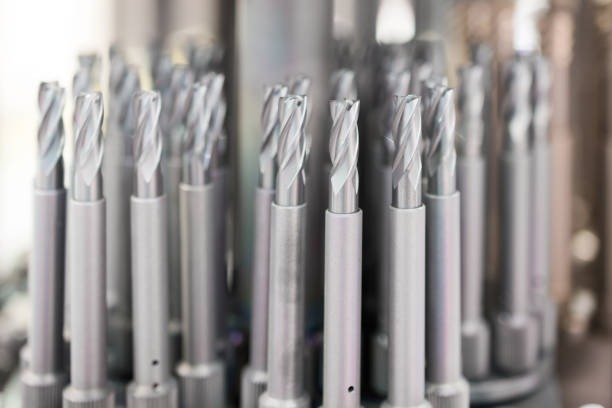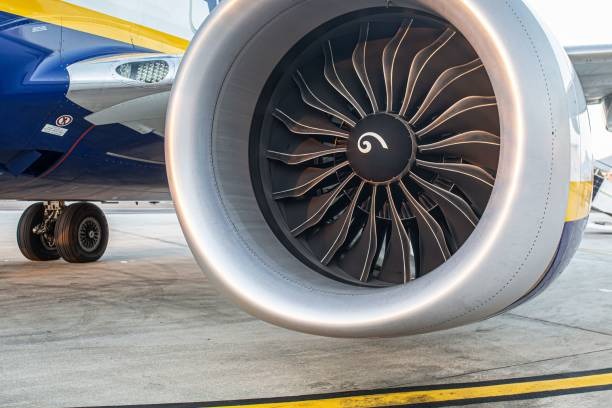Slot milling is one of the most frequently used CNC machining operations for creating precision slots, grooves, and keyways in components across automotive, aerospace, mold manufacturing, and general engineering. Whether machining aluminum, stainless steel, or hardened steel, the results depend heavily on selecting the right slot milling cutter, solid carbide end mill, indexable milling cutter, and a stable CNC machining center. With proper cutting parameters, tool path strategies, and machine rigidity, slot milling can achieve tighter tolerances, smoother surface finishes, and longer tool life. In this guide, we explore slot milling tools, machining techniques, troubleshooting solutions, and how advanced CNC machines—like Yangsen vertical machining centers and 5-axis machining systems—deliver superior performance and consistency in slot machining applications.
Slot milling is a machining process used to remove material and create a channel, groove, or keyway on a workpiece using a CNC milling machine. Unlike face milling or side milling, slot milling engages the full width of the cutter, meaning the tool is surrounded by material during cutting. This makes slot machining more demanding in terms of tool rigidity, chip evacuation, and machining stability.
Slots can vary in depth, width, and geometry based on application requirements. Common types include keyways for shafts, T-slots for machine fixtures, blind slots, and deep, narrow, precision grooves often seen in molds and aerospace components. Slot milling is widely used in parts requiring alignment, motion control, or mechanical locking functions.
Because different materials behave differently under cutting forces, achieving accuracy relies on selecting the right slot milling cutter, solid carbide end mill, or indexable tool, as well as applying the correct cutting speed, feed rate, and tool-path strategy. When executed correctly, slot milling enables manufacturers to achieve high-precision dimensional tolerances and consistent repeatability, especially when performed on a stable and rigid CNC machining center or 5-axis machining system.

Choosing the right cutting tool is one of the most important factors in achieving accurate and efficient slot milling. Different slot shapes, material hardness, and machining conditions require different cutter geometries and tool materials. The most commonly used tooling solutions for slot milling include solid carbide end mills, indexable milling cutters, and slot-specific cutters such as keyseat and T-slot milling tools.
Solid carbide end mills are ideal for high-precision slot milling in harder materials such as stainless steel, alloy steel, and titanium. They offer excellent rigidity, wear resistance, and surface finish, making them suitable for deep and narrow slots where dimensional accuracy is crucial. For high-speed machining or aluminum slot milling, multi-flute carbide tools with polished flutes or DLC coating help improve chip evacuation and reduce built-up edge.

For the removal of heavier materials or large slot dimensions, indexable milling cutters with replaceable inserts offer better cost efficiency. These cutters allow easy insert replacement without regrinding or replacing the entire tool body, making them suitable for long-term production runs. Insert geometry and coatings such as TiN, TiAlN, or AlTiN can be selected based on workpiece material and cutting speed requirements.
Some slot designs require dedicated tools such as keyseat cutters, slitting saws, and T-slot milling tools, especially in fixture building, mold making, and machine structure components. These tools are engineered to produce non-standard slot profiles with high repeatability.
Setting the correct machining parameters is critical for achieving stable slot milling performance, minimizing tool wear, and maintaining dimensional accuracy. Because slot milling often involves full-width engagement, the cutting forces are higher compared to side milling or light roughing. Therefore, operators must carefully adjust spindle speed, feed rate, depth of cut, and coolant strategy to match the tool type and material.
Spindle speed (RPM) should be determined based on cutting speed (Vc), tool diameter, and material hardness. Harder materials, such as stainless steel or tool steel, require lower RPM to prevent excessive heat, while softer materials like aluminum can be machined at higher speeds, especially with solid carbide end mills designed for high-speed machining.
Feed rate per tooth (fz) plays a major role in chip thickness. Too low a feed may cause rubbing instead of cutting, leading to premature wear or poor surface finish. Too high may overload the tool and create chatter or slot deformation. For slot milling, a moderate feed rate with consistent chip load helps maintain tool life and machining stability.
Depth of cut (ap) and step-over (ae) must be adjusted based on tool rigidity and machine capability. Full-slot engagement typically requires conservative depth settings, especially when machining deep or narrow slots. Progressive slotting or trochoidal strategies can be applied when deeper slot penetration is required.
Effective coolant and chip evacuation are essential for slot milling, particularly in blind slots. Flood coolant, air blast, and sometimes minimum quantity lubrication (MQL) can help prevent chip packing, overheating, and tool breakage. For aluminum and sticky materials, high-pressure coolant or polished flute designs can dramatically improve chip control.
Well-optimized machining parameters allow consistent slot width, better surface finishes, and longer tool life. When combined with a rigid vertical machining center or 5-axis CNC machine, slot milling becomes more controlled, repeatable, and efficient across different materials and applications.
Successful slot milling requires more than selecting the right tool and setting basic parameters—it also depends on choosing the best machining strategy. Because the cutter is fully engaged in the material, managing heat, cutting force, and chip evacuation becomes essential for accuracy and tool longevity.
One of the most effective slot milling methods is climb milling, where the cutter rotates in the same direction as the feed movement. This technique reduces cutting pressure, produces smoother surfaces, and minimizes burr formation. Conventional milling may be used only when necessary, such as machining unstable setups or cast surfaces.
For deep or narrow slots, a progressive slot machining strategy improves stability. Instead of cutting full depth in one pass, the tool gradually deepens the slot while maintaining a consistent chip load. This method reduces vibration and avoids tool deflection—especially valuable when using small-diameter solid carbide end mills.
Advanced tool paths such as trochoidal milling or adaptive clearing are increasingly used for slot machining. These strategies maintain constant engagement and minimize radial load on the tool. They allow higher feed rates, reduce heat, and significantly extend tool life, making them ideal for hard materials like stainless steel, Inconel, or hardened tool steel.
High-speed machining (HSM) can also benefit slot milling when supported by a stable CNC machining center with a high-precision spindle and rigid tool holder system (BT40, HSK-A63, or CAT40). The combination of small radial step-over and high feed rates enables smooth slot generation with controlled heat.
Finally, effective chip evacuation must not be overlooked. Blind slots and deep grooves require coolant, air blast, or MQL to prevent chips from packing inside the slot, which can lead to fracture, oversize width, or surface scoring.

Slot milling is widely applied in many manufacturing sectors where precise grooves, keyways, and mechanical engagement features are required. Because slots often affect alignment, assembly, and load transfer, accuracy and repeatability are critical. Below are the most common industries using slot milling:
Used for machining transmission shafts, gear components, engine housings, and structural parts.
Common slot types include keyways, alignment slots, and functional assembly grooves.
High-volume production often relies on indexable milling cutters for cost efficiency and consistent precision.
Requirements: tight tolerances, repeatability, and stable cycle times.
Applied in lightweight structural components, brackets, fuel system parts, engine mounts, and motion mechanisms.
Materials often include aluminum alloys, titanium, and heat-resistant superalloys.
High-speed machining with solid carbide end mills and optimized tool paths is typically required.
Critical priorities: high rigidity, surface quality, and controlled thermal deformation.

Used to machine cooling channels, guide slots, deep narrow grooves, and precision mold details.
Materials include pre-hardened steel, hardened tool steel, and high-alloy mold blocks.
5-axis machining centers and high-precision vertical machining centers are commonly preferred.
Requires excellent dimensional control and smooth surface finish to minimize post-processing.
Slot milling is essential for T-slot tables, guide rails, mechanical plates, housings, and fixture components.
Workpieces are often large, so rigidity and machine stability are key.
Indexable slot milling cutters and keyseat tools are frequently used for efficiency.
Focus: durability, machining flexibility, and compatibility with large-format CNC machines.
Applied in jigs, fixturing systems, connectors, medical device parts, robotics components, and precision housings.
Small batch and customization requirements make multi-axis CNC machining centers ideal.
Surface finish and dimensional tolerance are critical, especially for assembly components.
1. What is the best tool for slot milling?
The best tool depends on the material and slot dimensions. Solid carbide end mills are ideal for precision and harder materials, while indexable milling cutters are preferred for large slot widths or high-volume production.
2. Can slot milling be done on any CNC machine?
Slot milling can be performed on most CNC milling machines, but accuracy and stability depend on machine rigidity. For best results, use a vertical machining center or a 5-axis CNC machine with BT40 or HSK tool clamping.
3. How do I avoid tool breakage when slot milling deep grooves?
Use progressive depth cuts, reduce radial engagement, apply coolant or air blast for chip evacuation, and avoid excessive stick-out of the tool. Trochoidal or adaptive toolpaths also help reduce load.
4. What cutting parameters are recommended for slot milling?
Start with a moderate feed per tooth (fz) and reduce the depth of cut (ap) when using full slot engagement. Cutting speeds should be based on workpiece material, coating type, and spindle capability.
5. How do I improve surface finish in slot milling?
Use climb milling, reduce chatter by shortening tool extension, use a finishing pass with reduced feed, and ensure proper coolant flow. Higher-rigidity CNC machines and precision tool holders also improve finish quality.
6. Why does slot width sometimes become oversized?
Oversized slots are usually caused by tool deflection, chatter, or incorrect tool-path strategy. Reducing the depth of cut, increasing machine rigidity, and optimizing feed rates can correct the issue.
Slot milling is a critical machining operation in industries requiring precise grooves, keyways, and structural channels. From tool selection to machining strategy, every detail—such as feed rate, spindle speed, cutter geometry, and chip evacuation—directly affects accuracy, surface finish, and productivity. When paired with the right tooling, cutting parameters, and software-driven toolpaths, slot milling becomes more predictable, efficient, and repeatable across different materials and part complexities.
However, the success of slot milling doesn’t rely solely on the tool — it relies just as much on the machine behind it. A high-rigidity CNC machining center with a stable spindle, precise toolholder system, and strong vibration control can significantly improve slot geometry, tolerance stability, and tool life. This is why choosing the right machine is just as important as selecting the right cutter.
At Yangsen CNC, we design and manufacture CNC machining centers specifically engineered for high-precision milling applications — including slot milling, keyway machining, mold features, and multi-axis contour milling. Our 3-axis vertical machining centers and 5-axis CNC solutions offer high stiffness, thermal stability, and accuracy—making them suitable for industries from aerospace and automotive to mold manufacturing and high-precision machining.